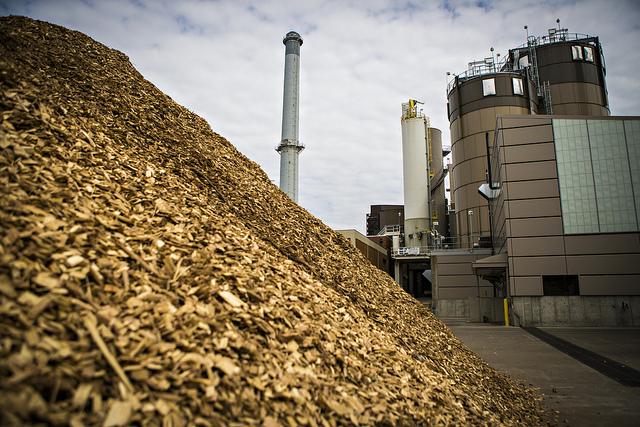
A biomass plant at Missouri University. Grant County, Ore. is expected to run two such biomass processing facilities by summer 2017.
Flickr/CAFNR
ASHLAND, Ore. - Southern Oregon University has a plan to make its campus the first in the Northwest to install a biomass power plant.
But its proposal is meeting some skepticism from Rogue Valley residents. At a public meeting Wednesday night, several people voiced skepticism about the resulting pollution and the effects on local forests.
Like many universities, Southern Oregon uses natural gas to heat its campus. But its current boiler system is getting old.
As a replacement, SOU wants to build a biomass cogeneration plant that would produce steam heat and electricity. The steam would be pumped out to campus buildings for heat. The electricity would be sold back to the grid.
Burning woody biomass would result in increased particulate matter going into the air. Talent resident Steven Petrovic says pollution in the Rogue Valley is already visible from the hiking trails above Ashland.
“Having a plant that could potentially feed into the air pollution – it could be problematic,” he said.
Southern Oregon officials say the project will meet all required air quality standards.
The University is pitching the biomass facility as a win-win for the campus community. Cost projections indicate burning locally-sourced logging waste would be much cheaper than natural gas. It would mean a significant reduction in the university’s carbon footprint.
EarthFix will have a complete look later this week at Southern Oregon University's bid to use woody debris from the forest to fuel its power plant.
